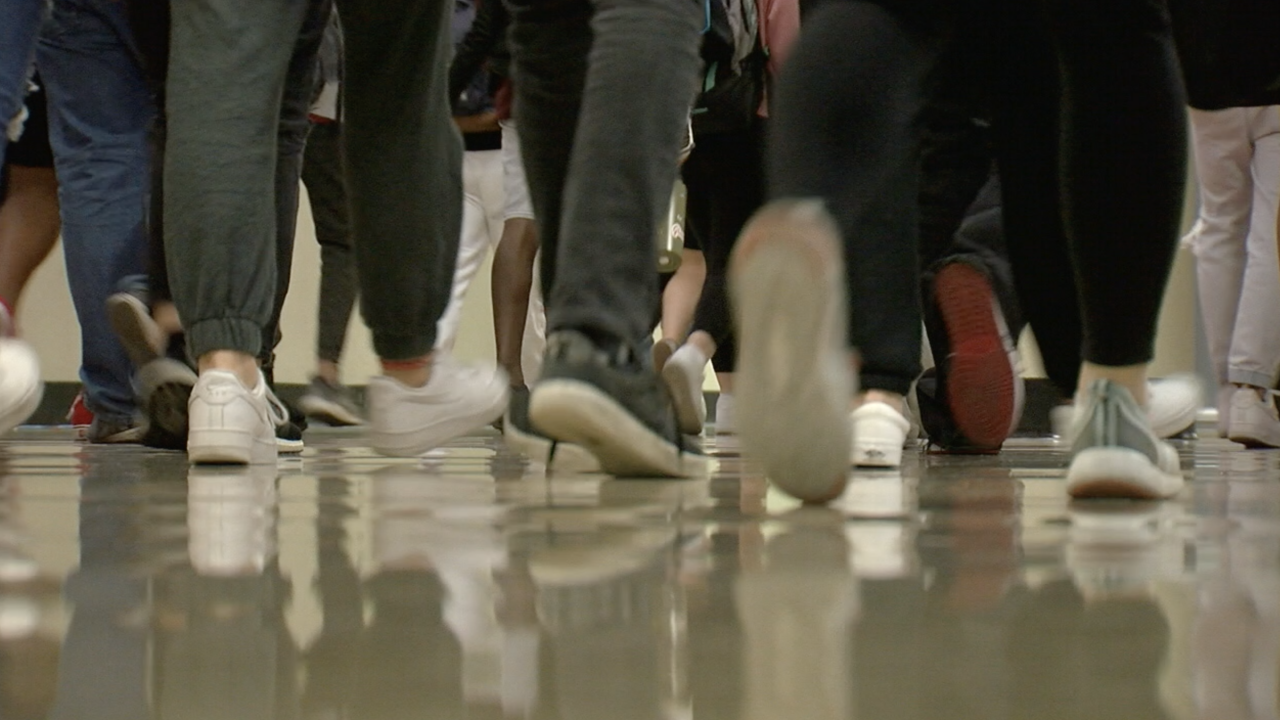While COVID-19 cases rise in Wisconsin, many city and rural school districts are facing staff shortages as they work to keep in-person learning for the year.
Just days after returning from winter break, Green Bay Area Public School District said there's a significant increase in the number of employees out of school due to the coronavirus.
"We had upwards of 500 total staff members - actually more than that - out each of the first three days of the year," said Stephen Murley, GBAPS superintendent. "So it's not only tough to teach class, but also to serve lunch, clean schools, answer phones and all the rest that goes along with it. It really simply overwhelms the substitute staff capacity that we have in the district."
This critical staffing shortage caused the district to move students and staff at Chappell Elementary School to virtual learning through Jan. 10.
- Chappell Elementary in Green Bay moves to virtual due to staff shortages
- Face masks mandatory at Neenah High School beginning Thursday
- Wisconsin breaks COVID record, reports more than 10,000 new cases in one day
Murley said 30% of the certified teaching staff is absent in some buildings. The district moved faculty who don't typically teach in the classroom to temporary substitute positions.
"We've pretty much emptied our district office building of anyone who's got a certification," Murley said. "School social workers, counselors, maybe even art, music and PE teachers are in regular classrooms teaching kids."
Murley and Eric Vanden Heuvel, GBAPS Board of Education president, said the goal is to keep kids in the classroom.
"We're just going to continue to look at this issue," Vanden Heuvel said. "This is where we're at right now. I don't think it's going away anytime soon, and we'll have to continue to get creative and think of what other solutions we might have."
The district as a whole won't move to virtual learning. The shift would be on a building by building basis. Families and staff would be notified by 9 p.m. via email, automated phone call and text.
Meanwhile, some rural school districts are facing similar challenges.
Corey Baumgartner, Brillion Public Schools superintendent, said they are seeing an increase in COVID-19 cases among students and staff. District data from Jan. 3 shows there are 16 students with active cases of COVID-19 and one staff member with a positive case. The dashboard will be updated on Thursday.
"They're at the highest levels we've seen up to date, but we're at a point right now that hasn't created that type of situation which would require us to close down classrooms," Baumgartner said.

The spike in cases is highlighting a long-time need for substitute teachers across rural schools.
"We've had our administrators subbing within the classrooms as well, because it's well known that there's a substitute teacher shortage across the state," Baumgartner said. "There might even be a requirement for me to do it tomorrow just based out of need."
Baumgartner said every district and every building has its limits when it comes to the amount of staff needed to operate, but said Brillion Public Schools hasn't reached it yet.
"We want kids within our buildings. We see that is the optimal learning environment and we want to do everything we can to ensure that's provided to them," Baumgartner said.
Kim Kaukl, Wisconsin Rural Schools Alliance executive director, said the staffing shortage is a problem at other rural school districts across Wisconsin. He said many schools are comprised of one-person departments, making it difficult if someone calls in sick.
"Especially in rural communities, if you've got a science teacher that does have to go out in quarantine, it's really hard to find somebody to fill that position because there's such a shortage of subs," Kaukl said.
Throughout the pandemic, Kaukl said many rural school districts remained mostly in-person and found innovative ways to maintain face-to-face learning, partially because virtual connection can be a major challenge.
"We've got broadband connectivity at most of our schools. That is really good. But when the kids go home, it's really difficult. They just don't have the connectivity or the access," Kaukl said. "They were giving kids hotspots, and just because of the geography of where we live with the hills and the valleys, we just couldn't get the connectivity."
Kaukl said each district needs to weigh what's best for its students and staff to finish the school year.
"I just hope families understand that the things being put in place to make sure their children are safe and the staff are safe are so we can continue face-to-face," Kaukl said. "Everybody may not agree with what we're doing, but following those guidelines because we've had success with those."




